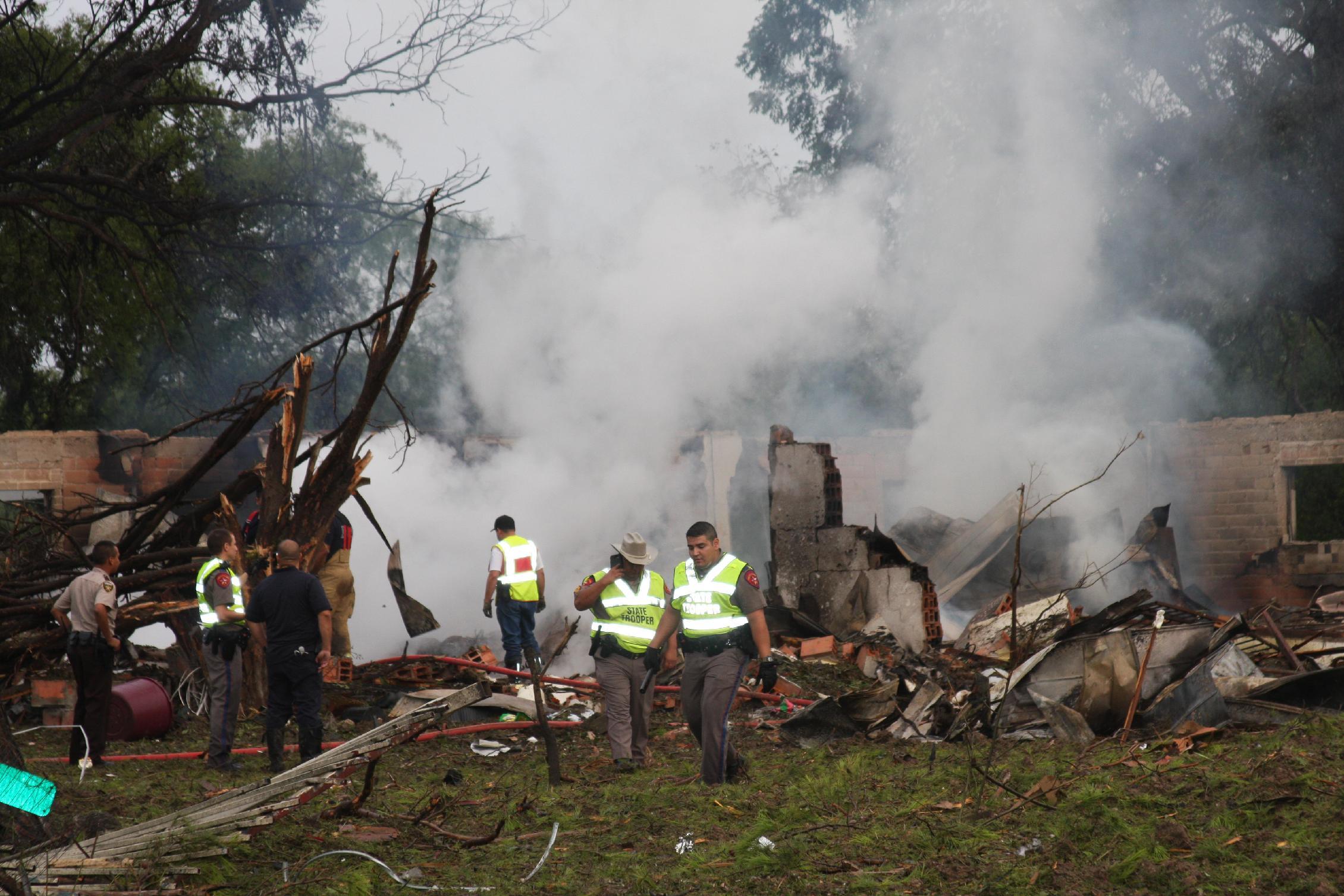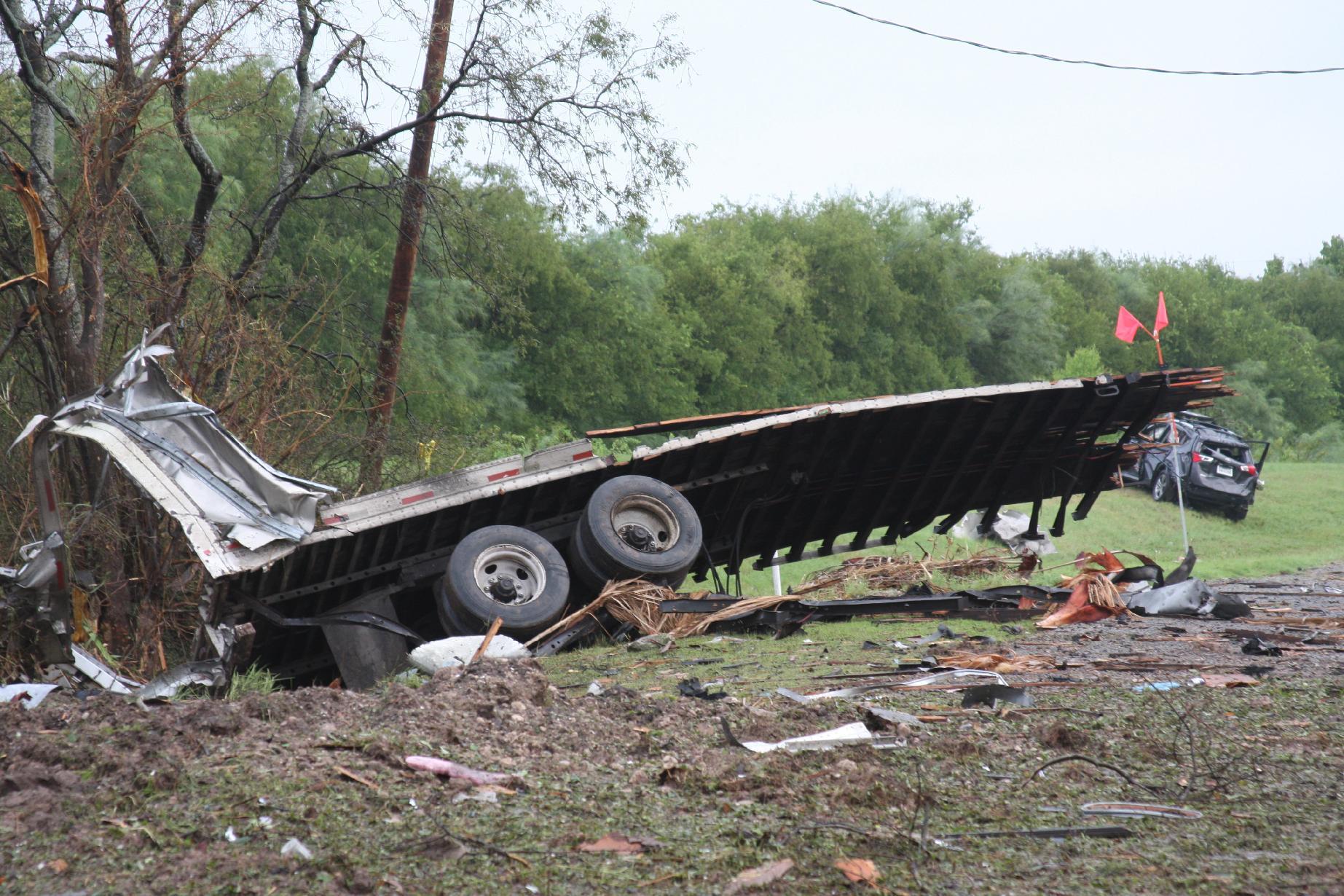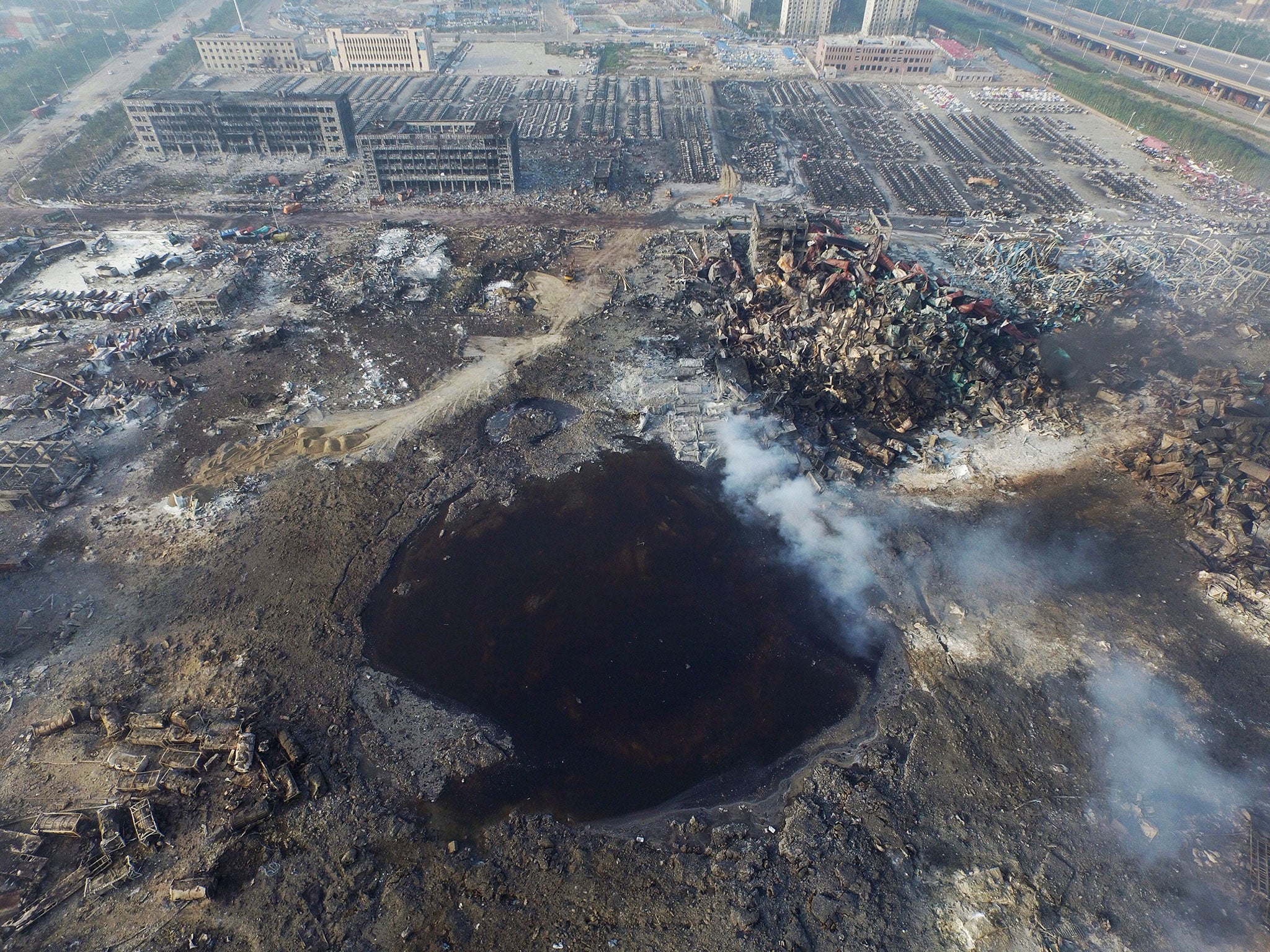Winston
Lorenzo von Matterhorn
- Joined
- Jan 31, 2009
- Messages
- 9,560
- Reaction score
- 1,748
The rules are apparently inadequate for bulk airbag unit transport or they simply weren't followed in this case.
August 29, 2016
The truck was pulling a flatbed trailer stacked with airbag cartridges and was headed to a Takata plant in Eagle Pass, Texas on August 22nd when it exploded in the town of Del Rio, Conexion Del Rio reports. According to authorities, the truck drove off the road, caught fire, and exploded right in front of the house of 69-year-old Lucila Robles, killing her. It reportedly took the Laredo, Texas medical examiner two days to identify Robles based on her dental records.
The driver of the truck, Mario Alberto Rodriguez, 20, was injured in the crash, but was able to move away from the truck before the explosion. A couple passing by the wrecked truck in an SUV was also injured when the blast occurred.
Ten homes in close proximity to the explosion had their windows broken and doors knocked off their hinges from the force of the detonation. In a sign of just how large the blast was, truck parts and other debris were found scattered nearly a mile away from where the truck exploded. Neither the cause of crash nor the official cause of the explosion have yet been released.
Following the incident, Takata released the following statement to Jalopnik:
A truck carrying airbag inflators and propellant that was being operated by a subcontractor to Takata was involved in an accident. According to preliminary reports, the accident caused a fire, which led to an explosion. Takata immediately deployed personnel to the site and has been working closely with the subcontractor and the appropriate authorities to investigate this incident. Takata has strict safety procedures relating to the transportation of its products that meet or exceed all regulatory requirements. Our thoughts are with the family of the woman who died as a result of this accident, and with the four people injured, who were immediately transported to San Antonio for medical treatment.
Takata uses ammonium nitrate to create a small explosion that fills air bags in a crash. But the chemical can deteriorate when exposed to prolonged heat and humidity and burn too fast. That can blow apart a metal canister and hurl shrapnel into drivers and passengers. At least 11 people, and probably 14, have died worldwide due to Takata inflator explosions. The deaths have occurred in the United States and Malaysia, where three remain under investigation.
-----
https://en.wikipedia.org/wiki/Airbag#Inflation
Although propellants containing the highly toxic sodium azide (NaN3) were common in early inflator designs, little to no toxic sodium azide has been found on used airbags. The azide-containing pyrotechnic gas generators contain a substantial amount of the propellant. The driver-side airbag would contain a canister containing about 50 grams of sodium azide. The passenger side container holds about 200 grams (!!!! - W) of sodium azide.
The alternative propellants may incorporate, for example, a combination of nitroguanidine, phase-stabilized ammonium nitrate (NH4NO3) or other nonmetallic oxidizer, and a nitrogen-rich fuel different from azide (e.g. tetrazoles, triazoles, and their salts). The burn rate modifiers in the mixture may be an alkaline metal nitrate (NO3-) or nitrite (NO2-), dicyanamide or its salts, sodium borohydride (NaBH4), etc.


August 29, 2016
The truck was pulling a flatbed trailer stacked with airbag cartridges and was headed to a Takata plant in Eagle Pass, Texas on August 22nd when it exploded in the town of Del Rio, Conexion Del Rio reports. According to authorities, the truck drove off the road, caught fire, and exploded right in front of the house of 69-year-old Lucila Robles, killing her. It reportedly took the Laredo, Texas medical examiner two days to identify Robles based on her dental records.
The driver of the truck, Mario Alberto Rodriguez, 20, was injured in the crash, but was able to move away from the truck before the explosion. A couple passing by the wrecked truck in an SUV was also injured when the blast occurred.
Ten homes in close proximity to the explosion had their windows broken and doors knocked off their hinges from the force of the detonation. In a sign of just how large the blast was, truck parts and other debris were found scattered nearly a mile away from where the truck exploded. Neither the cause of crash nor the official cause of the explosion have yet been released.
Following the incident, Takata released the following statement to Jalopnik:
A truck carrying airbag inflators and propellant that was being operated by a subcontractor to Takata was involved in an accident. According to preliminary reports, the accident caused a fire, which led to an explosion. Takata immediately deployed personnel to the site and has been working closely with the subcontractor and the appropriate authorities to investigate this incident. Takata has strict safety procedures relating to the transportation of its products that meet or exceed all regulatory requirements. Our thoughts are with the family of the woman who died as a result of this accident, and with the four people injured, who were immediately transported to San Antonio for medical treatment.
Takata uses ammonium nitrate to create a small explosion that fills air bags in a crash. But the chemical can deteriorate when exposed to prolonged heat and humidity and burn too fast. That can blow apart a metal canister and hurl shrapnel into drivers and passengers. At least 11 people, and probably 14, have died worldwide due to Takata inflator explosions. The deaths have occurred in the United States and Malaysia, where three remain under investigation.
-----
https://en.wikipedia.org/wiki/Airbag#Inflation
Although propellants containing the highly toxic sodium azide (NaN3) were common in early inflator designs, little to no toxic sodium azide has been found on used airbags. The azide-containing pyrotechnic gas generators contain a substantial amount of the propellant. The driver-side airbag would contain a canister containing about 50 grams of sodium azide. The passenger side container holds about 200 grams (!!!! - W) of sodium azide.
The alternative propellants may incorporate, for example, a combination of nitroguanidine, phase-stabilized ammonium nitrate (NH4NO3) or other nonmetallic oxidizer, and a nitrogen-rich fuel different from azide (e.g. tetrazoles, triazoles, and their salts). The burn rate modifiers in the mixture may be an alkaline metal nitrate (NO3-) or nitrite (NO2-), dicyanamide or its salts, sodium borohydride (NaBH4), etc.







